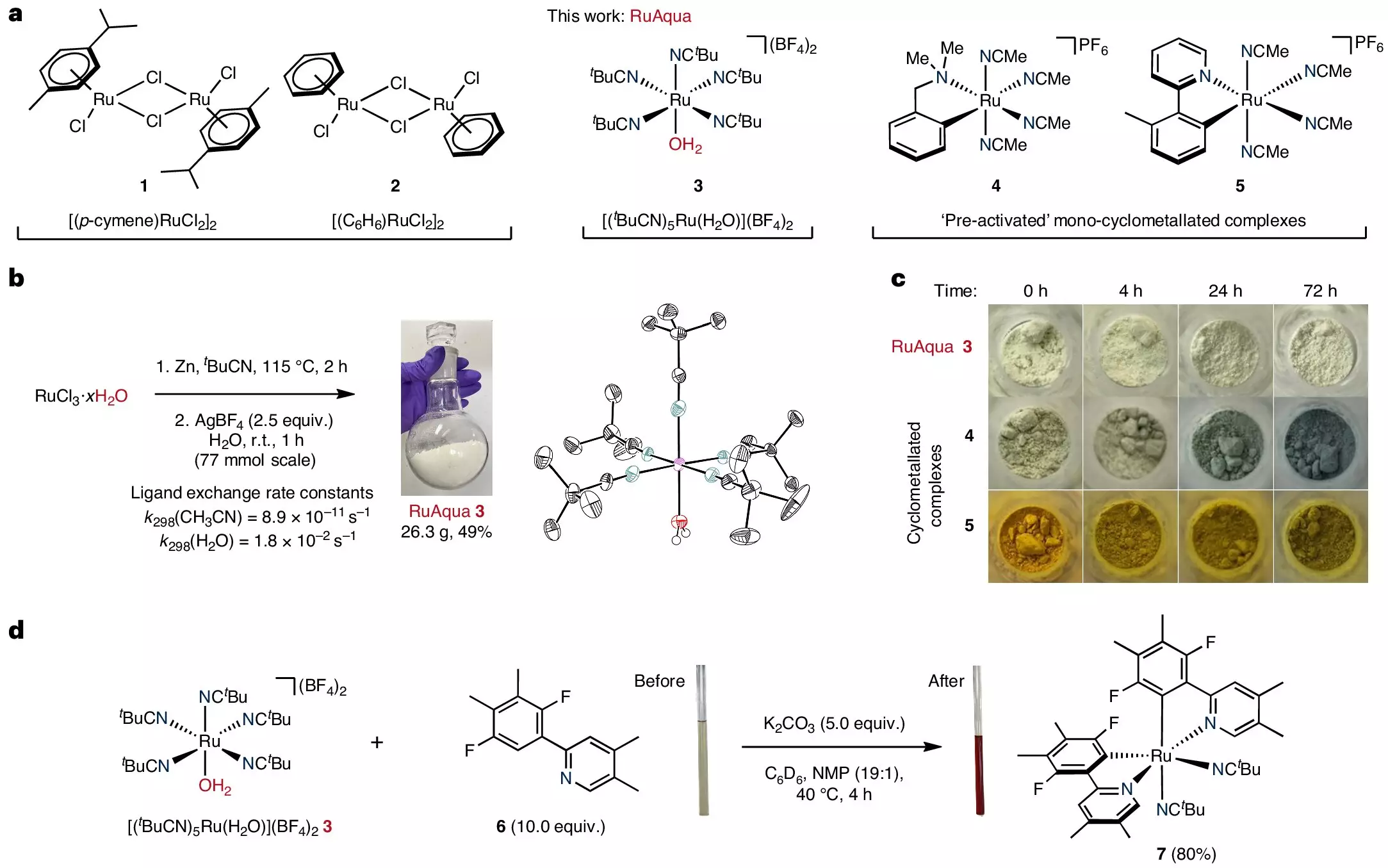The innovative breakthrough in catalyst development by researchers at The University of Manchester marks a significant advancement in the field of chemistry. Catalysts are known for their pivotal role in accelerating chemical reactions and enabling the production of a wide array of products essential in our daily lives. Among the various catalysts, ruthenium, a platinum group metal, has stood out for its remarkable reactivity and cost-effectiveness. However, the challenge has always been its sensitivity to air, which limited its widespread application and required specialized handling.
In a groundbreaking study published in Nature Chemistry, the team of scientists from The University of Manchester, in collaboration with AstraZeneca, introduced a ruthenium catalyst that defies previous limitations. This new catalyst showcases exceptional reactivity while maintaining stability in air, a feat that was previously deemed unachievable. The implications of this discovery are profound, as it eliminates the need for specialized equipment, reduces handling procedures, and allows for simultaneous reactions. These advancements streamline optimization processes, resulting in quicker procedures, reduced environmental impact, and minimized waste generation.
One of the most remarkable aspects of this new ruthenium catalyst is its user-friendly nature, allowing non-specialists to leverage the power of ruthenium catalysis. The simplicity of handling and implementation processes opens up a world of possibilities for individuals across various industries to explore its potential. Collaborative efforts with AstraZeneca have demonstrated the applicability of this catalyst in industrial settings, particularly in the realms of drug discovery and manufacturing. Dr. James Douglas, Director of High-Throughput Experimentation at AstraZeneca, highlighted the significance of this catalyst in advancing sustainable practices within the biopharmaceutical industry.
The versatility and accessibility of the new ruthenium catalyst have already led to the discovery of novel reactions that were previously unattainable with ruthenium. This enhanced functionality has sparked excitement among researchers, as they anticipate further advancements and innovations in the field of chemistry. The newfound capabilities of this catalyst are poised to revolutionize chemical processes, driving progress towards more efficient, sustainable, and groundbreaking discoveries.
The development of the ruthenium catalyst represents a significant milestone in catalyst innovation, offering a glimpse into the future of chemical reactions. As researchers continue to explore the full potential of this catalyst, the possibilities for new discoveries and applications are endless. This discovery not only showcases the ingenuity and dedication of the scientific community but also highlights the transformative power of collaboration and innovation in advancing chemical research and industrial practices.



Leave a Reply